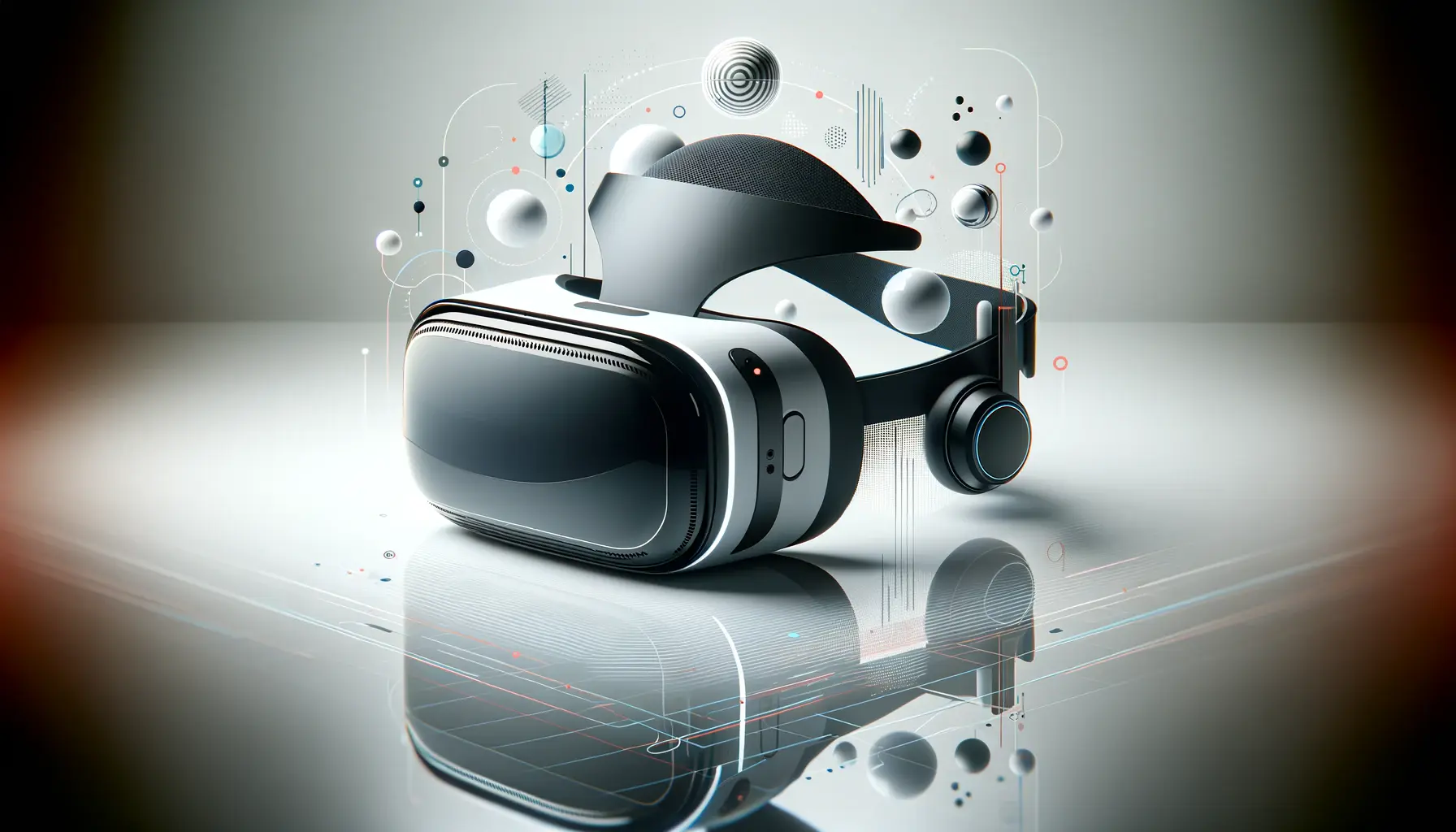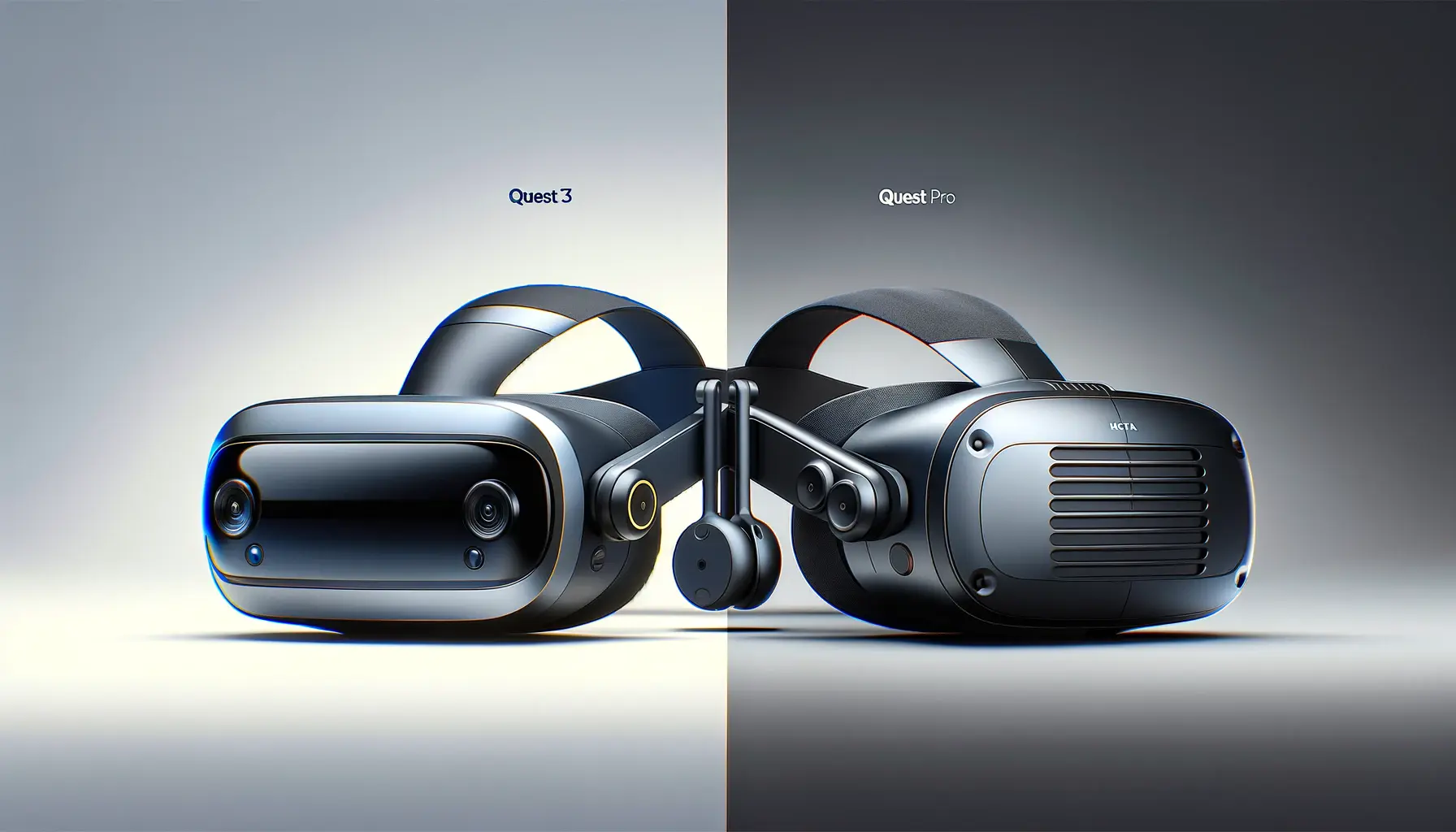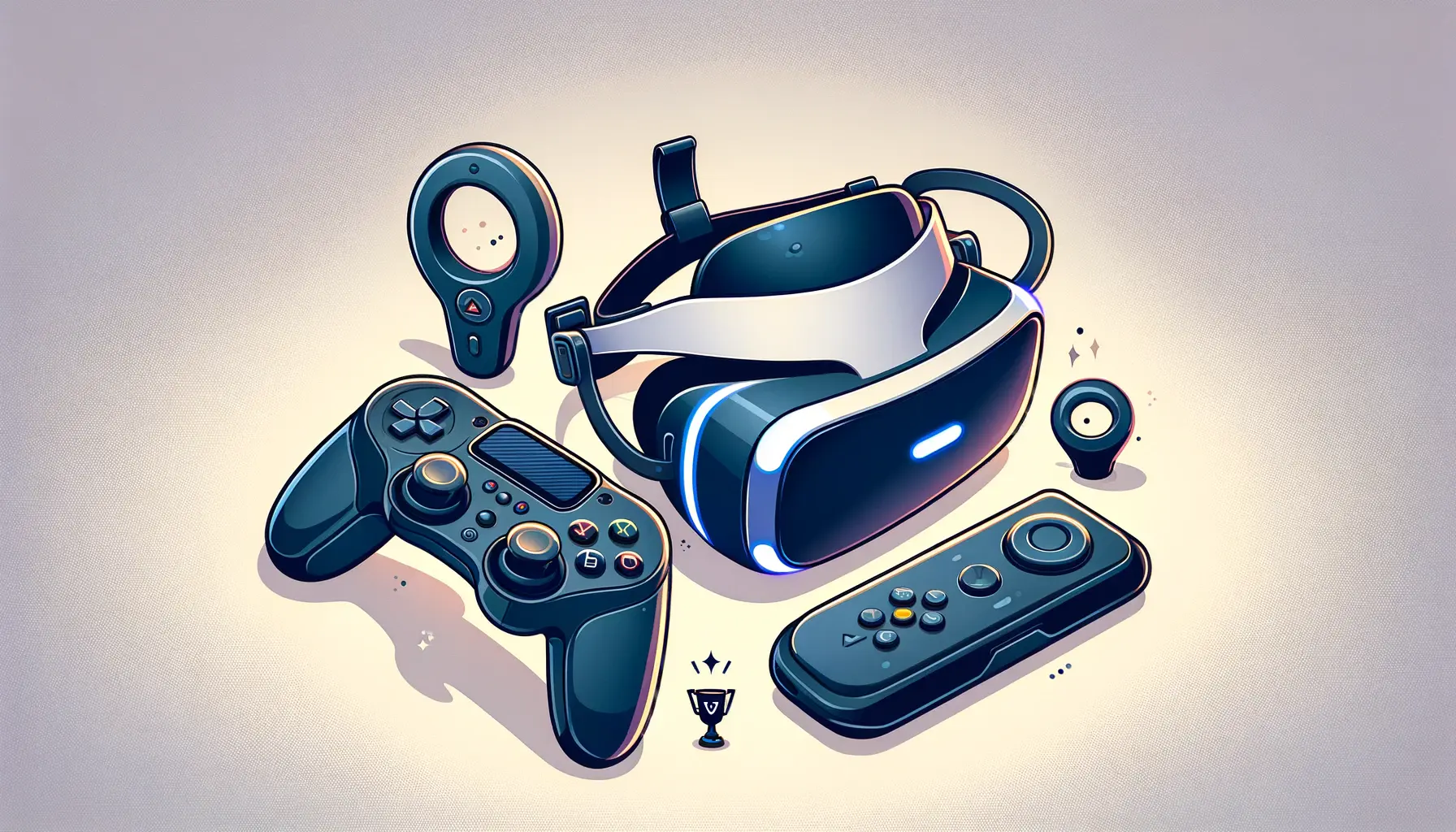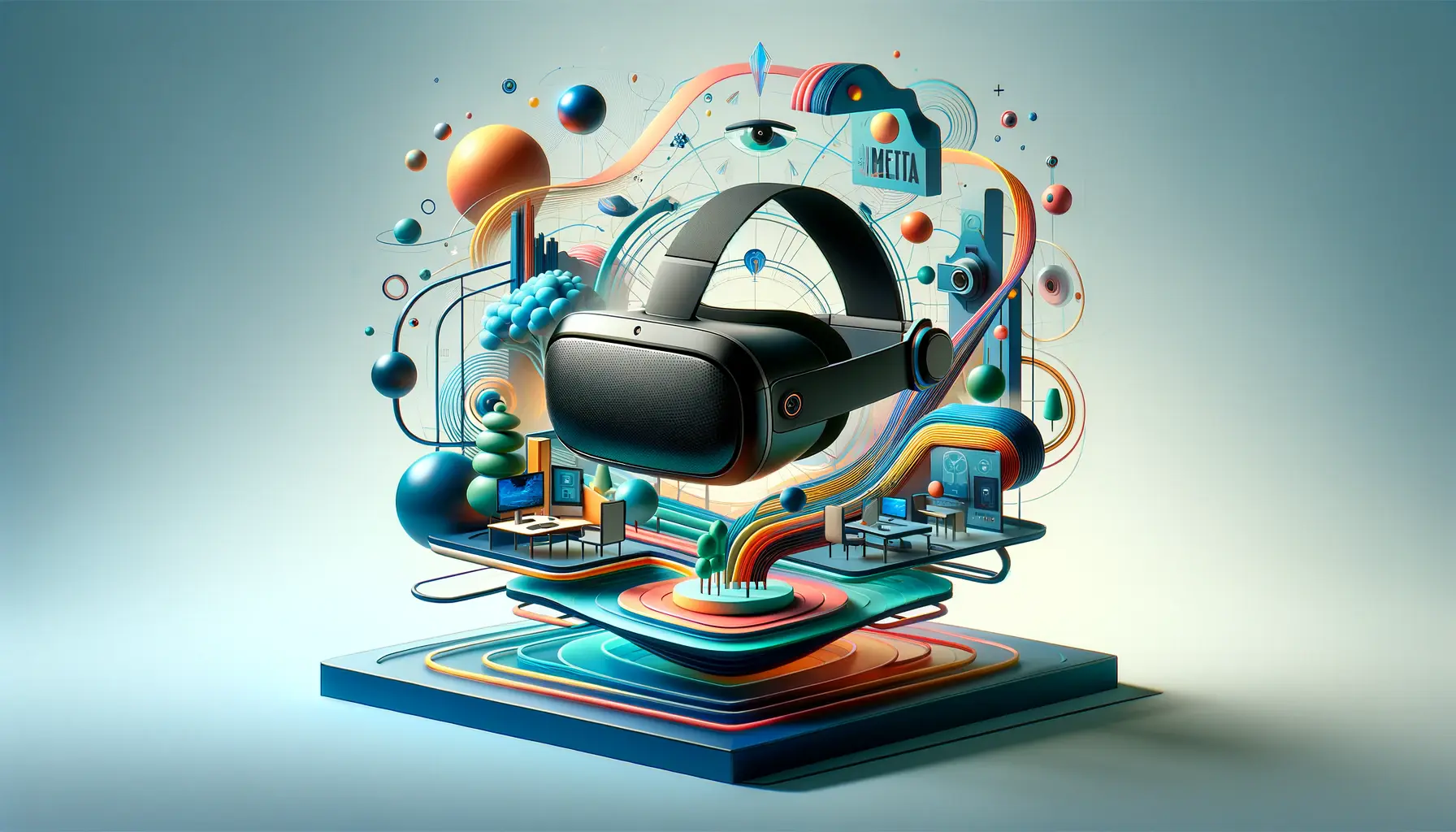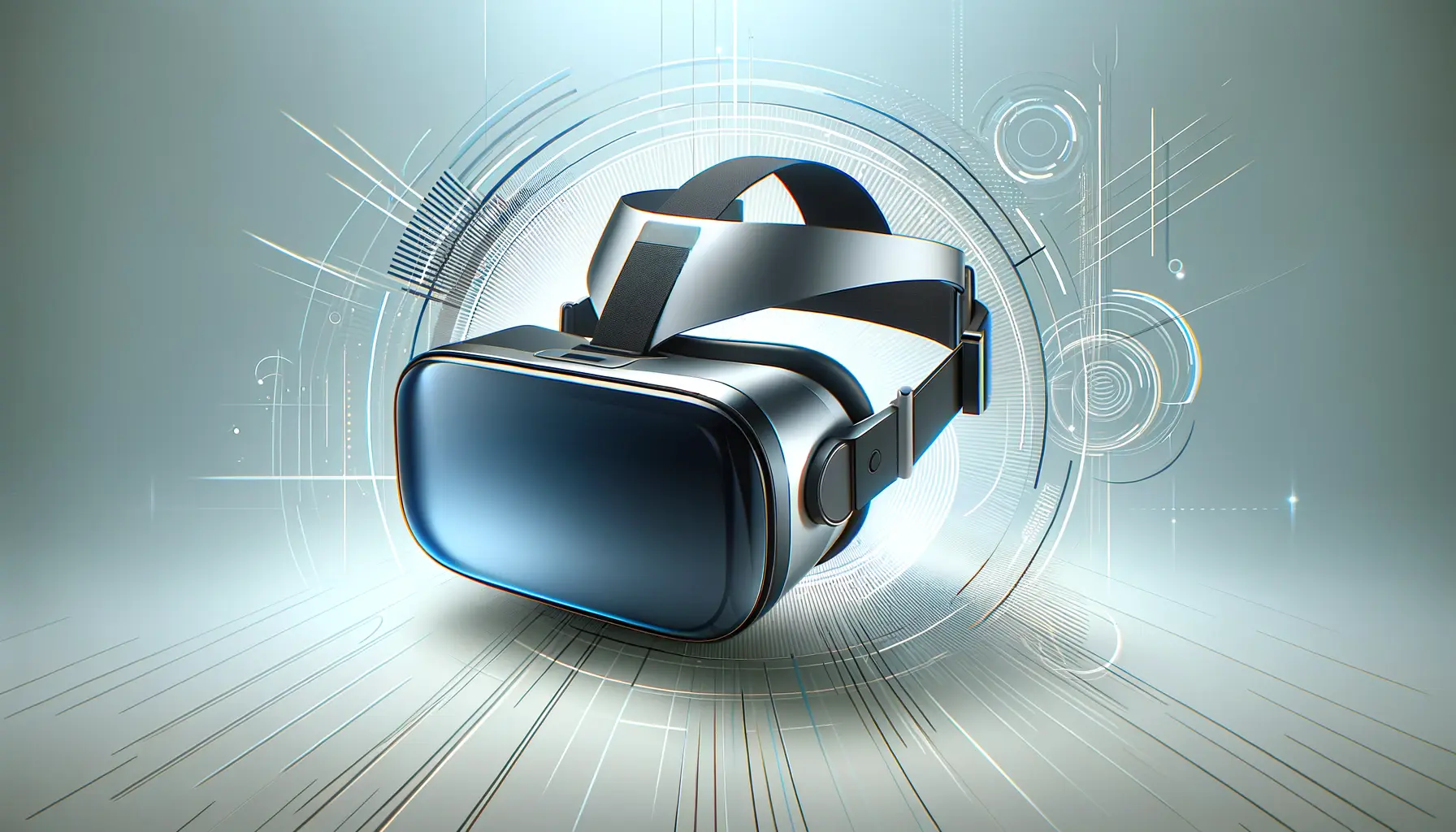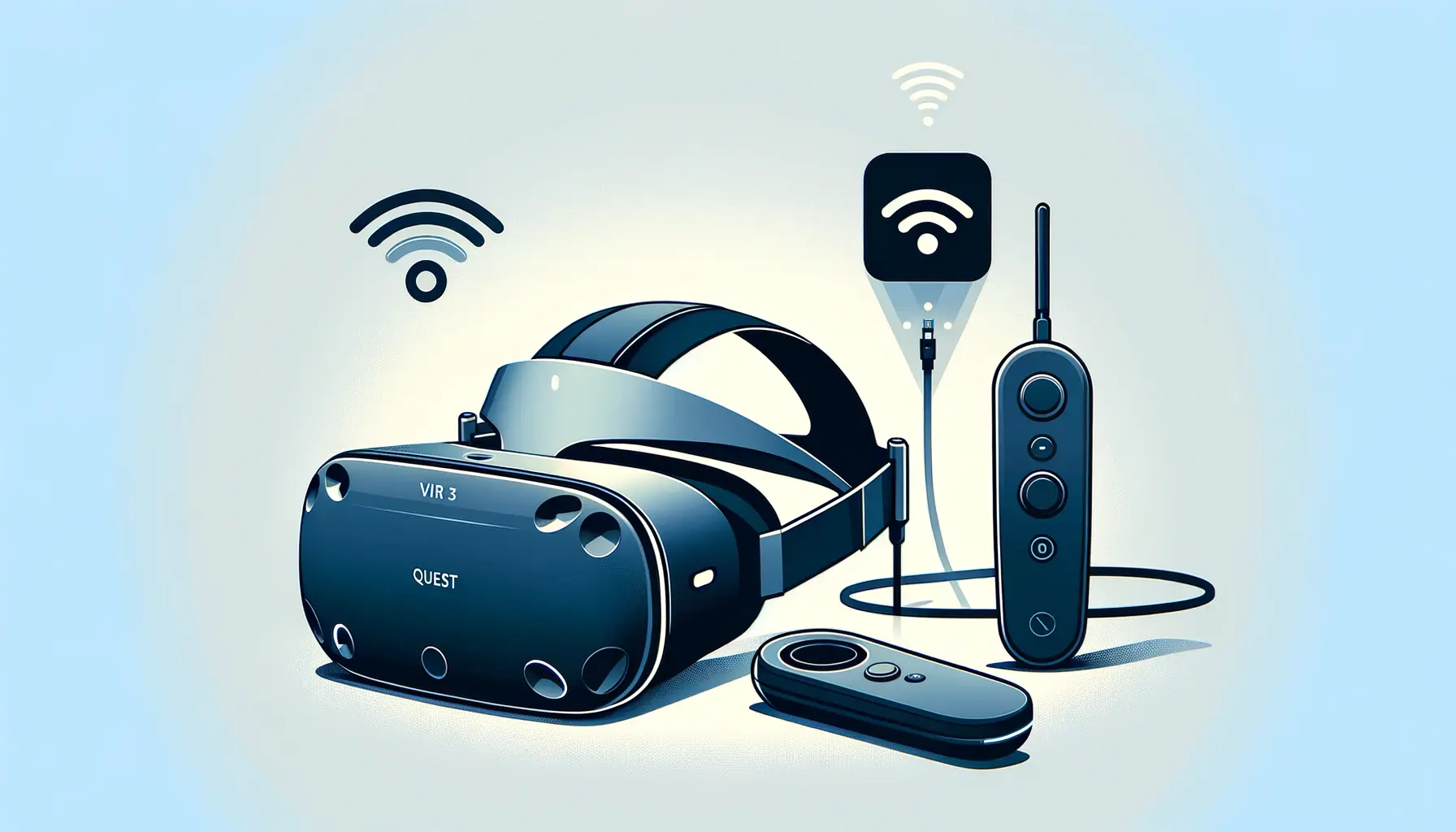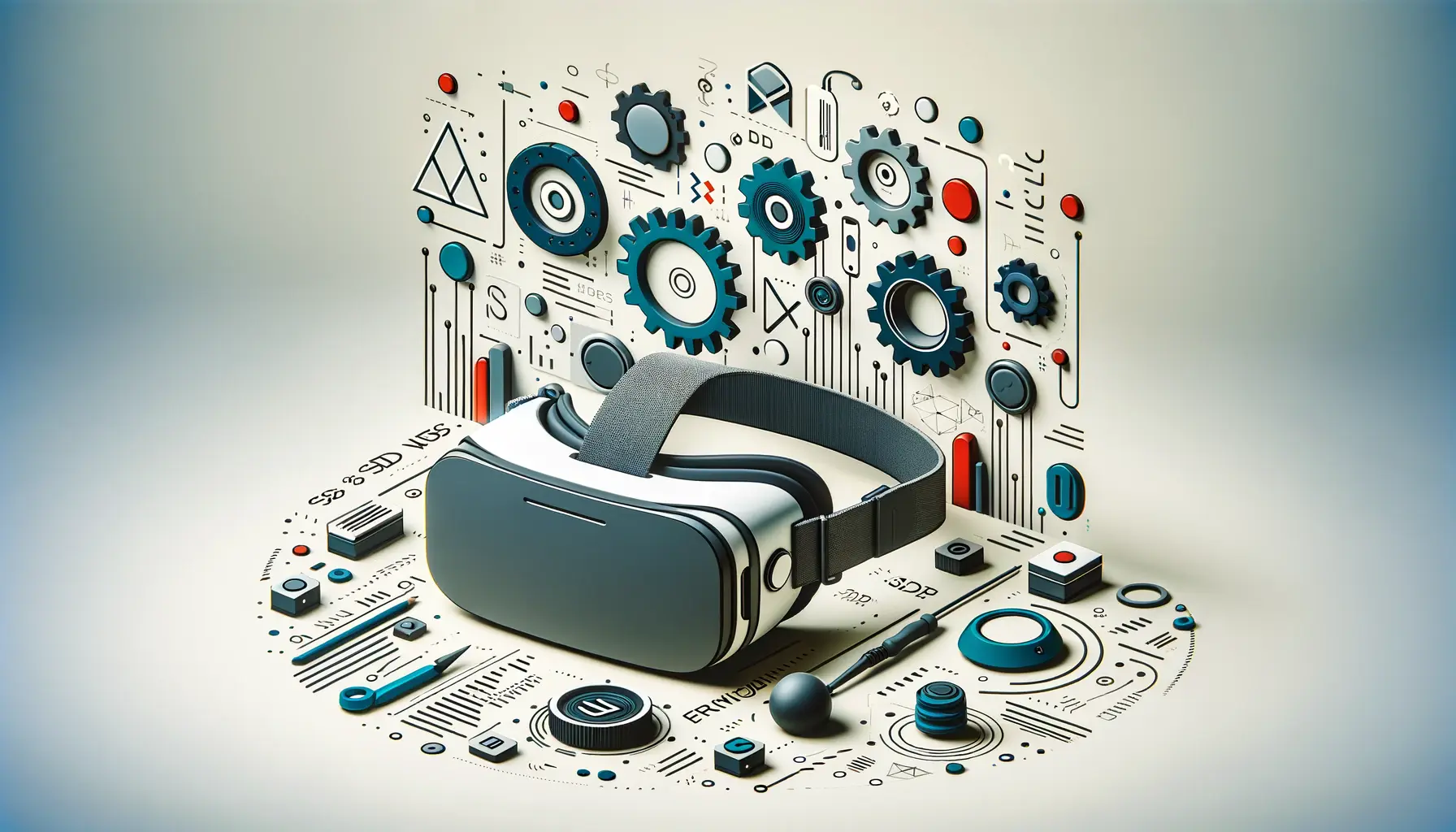The advent of Meta Quest 3 marks a significant milestone in the evolution of virtual reality (VR) gaming, heralding a new era where the boundaries between the digital and physical worlds blur more seamlessly than ever before.
This latest iteration from Meta not only showcases the rapid advancement in VR technology but also sets a new standard for immersive gaming experiences.
As we delve into the impact of Meta Quest 3 on gaming, it’s essential to understand the technological leaps it embodies and how these innovations redefine user engagement, gameplay mechanics, and the overall gaming landscape.
At its core, Meta Quest 3 is not just a successor to its predecessors but a bold statement on the future of VR gaming.
With enhanced processing power, improved graphics, and groundbreaking mixed reality (MR) capabilities, it offers gamers an unparalleled level of immersion.
These advancements are not merely incremental; they represent a transformative shift in how games are played, developed, and experienced.
The impact of Meta Quest 3 extends beyond the confines of traditional gaming, influencing content creation, social interactions, and even the economic models within the gaming industry.
- Technological Innovations and Enhancements
- User Experience and Engagement
- Impact on Game Development
- Challenges and Solutions for Adoption
- Community and Ecosystem Development
- Future Prospects and Innovations
- Integrating VR into Everyday Life
- Embracing the Future: The Transformative Impact of Meta Quest 3 on Gaming and Beyond
- Meta Quest 3: Essential FAQs
Technological Innovations and Enhancements
Advanced Processing Power and Graphics
The Meta Quest 3 introduces a significant upgrade in processing power and graphics, setting a new benchmark for VR gaming devices.
This leap forward is not just about delivering crisper visuals but also about enabling more complex and detailed game environments.
The impact of these enhancements on gaming is profound, allowing for more immersive and realistic experiences that were previously unattainable.
Developers can now craft intricate worlds with dynamic lighting, realistic textures, and advanced physics, making the virtual realms more engaging and lifelike.
Moreover, the increased processing power ensures smoother gameplay, reducing latency and enhancing the overall responsiveness of the system.
This improvement is crucial for VR gaming, where any delay can disrupt the immersive experience and cause discomfort.
By minimizing these issues, Meta Quest 3 provides a more comfortable and enjoyable gaming session, encouraging longer play times and deeper immersion in virtual worlds.
Mixed Reality Capabilities
One of the most groundbreaking features of the Meta Quest 3 is its mixed reality capabilities.
By blending digital content with the physical world, MR offers a new dimension of interactive experiences.
This technology allows players to see and interact with virtual objects as if they were actually present in their physical environment, opening up endless possibilities for game design.
From puzzle games that utilize real-world objects to action games that transform your living room into a battlefield, MR expands the playground for developers and players alike.
The inclusion of MR in Meta Quest 3 not only enhances the gaming experience but also broadens the scope of VR applications.
It can be used for educational purposes, fitness, social interaction, and even remote work, making it a versatile tool beyond entertainment.
This versatility underscores the impact of Meta Quest 3 on not just gaming but on how we perceive and interact with digital content in our daily lives.
The Meta Quest 3’s advanced processing power, superior graphics, and mixed reality capabilities significantly impact the gaming industry by offering more immersive and realistic experiences, opening new avenues for game development and expanding the application of VR beyond gaming.
User Experience and Engagement
The Meta Quest 3 significantly elevates the user experience and engagement in VR gaming through its intuitive design and immersive features.
By focusing on user comfort and immersive interaction, it not only retains the existing VR enthusiast base but also attracts new users to the platform.
The impact of these improvements on user experience and engagement is multifaceted, enhancing not just the way games are played but also how players interact with the virtual environment and each other.
Enhanced Comfort and Accessibility
One of the critical advancements of the Meta Quest 3 is its enhanced comfort and accessibility.
Recognizing that prolonged VR sessions can lead to discomfort, Meta has introduced design improvements that make the headset lighter and more balanced.
These changes significantly reduce fatigue, allowing players to engage in longer gaming sessions without discomfort.
Furthermore, the device’s improved strap design and facial interface cater to a wider range of head sizes and shapes, ensuring a snug and comfortable fit for a diverse user base.
Accessibility features have also been a focal point, with the Meta Quest 3 offering options such as adjustable IPD (interpupillary distance), voice commands, and hand tracking.
These features not only make VR more accessible to people with different physical abilities but also enhance the overall user experience by providing more natural and intuitive ways to interact with virtual environments.
Immersive Interaction and Social Connectivity
The Meta Quest 3 pushes the boundaries of immersive interaction and social connectivity within VR.
With the introduction of more accurate hand tracking and haptic feedback, players can interact with the virtual world in a more natural and intuitive manner.
This level of immersion is further enhanced by the device’s spatial audio capabilities, which deliver realistic soundscapes that change based on the user’s movements and interactions.
- Hand Tracking: Allows for gesture-based controls, making interactions like grabbing, throwing, or manipulating objects in VR feel more natural.
- Haptic Feedback: Provides tactile sensations that mimic the feel of real-world objects, enhancing the realism of virtual experiences.
- Spatial Audio: Delivers 3D sound that helps users pinpoint the direction and distance of sounds in the virtual environment, adding depth to the gaming experience.
Moreover, Meta Quest 3’s focus on social connectivity brings players together in virtual spaces, enabling shared experiences that were previously limited to the physical world.
Whether it’s co-op games, virtual meetups, or live events, the platform offers a myriad of opportunities for social interaction, fostering a sense of community among users.
This social aspect not only enhances the enjoyment of VR but also plays a crucial role in its adoption and growth.
The Meta Quest 3’s focus on user comfort, immersive interaction, and social connectivity significantly enhances the VR gaming experience, making it more accessible and enjoyable for a wider audience.
Impact on Game Development
The release of Meta Quest 3 has a profound impact on the game development landscape, pushing the boundaries of what’s possible in VR gaming.
This new hardware not only offers developers a more powerful platform to build upon but also challenges them to innovate and create more engaging, immersive experiences.
The implications of these advancements are far-reaching, affecting game design, development processes, and the overall market for VR games.
With the enhanced capabilities of Meta Quest 3, developers are now equipped to explore new genres and gameplay mechanics that were previously challenging to implement due to hardware limitations.
This shift not only diversifies the VR gaming ecosystem but also elevates the quality and depth of VR games.
Expanding Game Genres and Mechanics
The increased processing power and mixed reality capabilities of Meta Quest 3 enable developers to experiment with a wider range of game genres and mechanics.
For instance, the improved graphics and processing speed allow for more detailed and expansive open-world games, while the MR features open up new possibilities for augmented reality (AR) experiences and games that blend the virtual with the real world.
- Open-world VR games can now feature more complex environments and dynamic weather systems, enhancing realism and immersion.
- MR capabilities allow for games that incorporate real-world objects and environments into gameplay, offering a unique blend of physical and virtual interaction.
Enhancing Development Tools and Workflows
Meta’s commitment to supporting developers is evident in the enhanced tools and resources made available for Meta Quest 3 development.
These tools not only streamline the development process but also provide developers with more control and flexibility over their creations.
Improved SDKs (Software Development Kits), more robust APIs (Application Programming Interfaces), and comprehensive documentation facilitate the creation of more sophisticated and interactive VR experiences.
- Advanced SDKs offer new functionalities, such as better hand tracking and spatial audio integration, allowing for more immersive game designs.
- Enhanced APIs support more complex interactions and multiplayer features, enabling developers to create more engaging social experiences.
The impact of Meta Quest 3 on game development extends beyond technical advancements, fostering a more vibrant and innovative VR gaming ecosystem.
As developers harness the full potential of this new platform, players can expect a richer array of VR games that push the limits of immersion, interaction, and creativity.
The Meta Quest 3 catalyzes innovation in VR game development, enabling a broader range of genres, more immersive gameplay mechanics, and streamlined development processes.
Challenges and Solutions for Adoption
The introduction of Meta Quest 3 into the gaming market brings with it not only advancements in technology and user experience but also challenges in terms of adoption and accessibility.
While the device sets a new standard for VR gaming, ensuring widespread adoption requires addressing several barriers.
These challenges range from the cost of the hardware to the need for compelling content that can attract a broader audience.
However, solutions are emerging to mitigate these issues, facilitating a smoother transition for users from traditional gaming platforms to VR.
Understanding these challenges and the strategies employed to overcome them is crucial for both consumers and developers as the VR industry continues to evolve.
Cost and Accessibility
One of the primary barriers to the adoption of Meta Quest 3 is its cost.
High-quality VR headsets represent a significant investment for many consumers, potentially limiting the device’s accessibility to a wider audience.
Additionally, the requirement for a compatible gaming PC for certain VR experiences (though less so for standalone devices like the Quest 3) can add to the overall expense, further hindering widespread adoption.
- To address the issue of cost, Meta has focused on developing more affordable accessories and offering bundle deals that provide value for money.
- Financing options and subscription models are also being explored as ways to make VR more accessible to a broader range of consumers.
Content Availability and Quality
Another challenge facing the adoption of Meta Quest 3 is the availability and quality of VR content.
For VR to appeal to a mainstream audience, there needs to be a wide selection of high-quality games and experiences that cater to diverse interests.
The initial library of VR titles was limited, with many games feeling more like tech demos than fully-fledged gaming experiences.
- Meta and third-party developers are actively working to expand the library of available games, focusing on both quantity and quality to ensure a rich and varied VR ecosystem.
- Partnerships with established gaming studios and incentives for indie developers are strategies being employed to encourage the creation of compelling VR content.
Despite these challenges, the potential of Meta Quest 3 to transform the gaming industry is undeniable.
By addressing issues related to cost, accessibility, and content quality, Meta is paving the way for a future where VR gaming is a mainstream and integral part of the gaming landscape.
While challenges such as cost and content availability pose hurdles to the widespread adoption of Meta Quest 3, strategic solutions are being implemented to enhance accessibility and enrich the VR gaming ecosystem.
Community and Ecosystem Development
The Meta Quest 3 is not just a technological marvel; it’s a catalyst for fostering a vibrant and inclusive VR gaming community.
The development of this community and the broader ecosystem is crucial for the sustained growth and success of VR gaming.
Meta has recognized this and has implemented several initiatives aimed at nurturing a supportive environment where players, developers, and content creators can thrive.
This focus on community and ecosystem development is evident in the platform’s design, which encourages interaction, collaboration, and shared experiences among users.
Let’s explore how these efforts are shaping the future of VR gaming.
Building a Supportive VR Gaming Community
The Meta Quest 3 platform is designed with social interaction at its core.
Features such as multiplayer games, social spaces, and live events are integral to the device’s ecosystem, enabling users to connect, share experiences, and build relationships within the virtual world.
These social features not only enhance the gaming experience but also create a sense of belonging and community among users.
- Multiplayer games and co-op experiences allow players to team up, compete, and share moments of triumph and defeat, fostering camaraderie and friendship.
- Social spaces and virtual meetups offer venues for users to interact, discuss, and collaborate beyond the confines of individual games, encouraging community engagement.
Supporting Developers and Content Creators
For the VR ecosystem to flourish, it’s essential to support the developers and content creators who bring innovative experiences to the platform.
Meta Quest 3 provides a range of tools, resources, and platforms to help creators bring their visions to life.
From development kits and funding opportunities to community forums and showcase events, these initiatives are designed to lower barriers to entry and encourage creativity and innovation within the VR space.
- Development kits and APIs make it easier for developers to create and optimize their games for the Meta Quest 3, ensuring a smooth and immersive gameplay experience.
- Funding opportunities and showcase events provide platforms for developers to secure investment and gain visibility for their projects, driving innovation and diversity in VR content.
The concerted effort to develop a thriving community and ecosystem around the Meta Quest 3 is a testament to Meta’s commitment to the future of VR gaming.
By fostering an environment that supports interaction, collaboration, and innovation, Meta is not only enhancing the current VR gaming experience but also laying the groundwork for its continued evolution and expansion.
The development of a supportive community and ecosystem is key to the success of Meta Quest 3, with initiatives aimed at enhancing social connectivity, supporting creators, and fostering innovation within the VR space.
Future Prospects and Innovations
The launch of Meta Quest 3 has set a new precedent in the realm of virtual reality gaming, not just through its current offerings but also by paving the way for future innovations.
The VR industry stands on the cusp of significant transformation, with Meta Quest 3 playing a pivotal role in shaping what’s next.
This section delves into the anticipated future prospects and innovations that could further revolutionize VR gaming, driven by the technological foundation and market reception of Meta Quest 3.
As we look ahead, several key areas emerge where advancements are likely to materialize, driven by ongoing research, user feedback, and the evolving needs of the gaming community.
These innovations promise to enhance immersion, expand accessibility, and open new avenues for gameplay and social interaction.
Enhanced Immersion Through Sensory Feedback
One of the most exciting prospects for the future of VR gaming is the enhancement of sensory feedback.
Beyond visual and auditory immersion, the next frontier involves integrating tactile feedback, smell, and even taste into VR experiences.
Research into haptic feedback suits, olfactory technology, and gustatory stimulators is underway, aiming to create a fully immersive sensory experience that blurs the line between the virtual and the real.
- Haptic feedback suits could provide nuanced sensations of touch, temperature, and pressure, making virtual environments feel more tangible.
- Olfactory technology would introduce the dimension of smell, enhancing the realism of virtual worlds and their emotional impact.
Accessibility and Inclusivity Innovations
Another critical area of development is making VR gaming more accessible and inclusive.
Future iterations of VR hardware and software will likely focus on removing barriers for users with disabilities, incorporating adaptive technologies, and designing more intuitive user interfaces.
These advancements aim to ensure that VR gaming can be enjoyed by a broader audience, regardless of physical abilities or technological proficiency.
- Adaptive controllers and input devices tailored to different needs and abilities, ensuring everyone can navigate and interact within VR environments effectively.
- Software enhancements like voice recognition, eye-tracking, and AI-driven adaptive interfaces could make VR more intuitive and accessible for users with diverse needs.
The potential for future innovations in VR gaming is vast, with Meta Quest 3 laying the groundwork for what’s to come.
As technology advances and the community of VR enthusiasts grows, we can expect to see a continuous evolution of immersive, accessible, and engaging virtual reality experiences.
The journey of VR gaming is just beginning, and the horizon is filled with limitless possibilities.
The future of VR gaming, inspired by the innovations of Meta Quest 3, holds exciting prospects for enhanced immersion, increased accessibility, and groundbreaking gameplay experiences, promising a more inclusive and engaging virtual reality for all.
Integrating VR into Everyday Life
The impact of Meta Quest 3 extends far beyond the confines of gaming, signaling a shift towards the integration of virtual reality into everyday life.
As VR technology becomes more advanced and accessible, its applications are expanding into education, work, fitness, and social interactions, blurring the lines between digital and physical realities.
This integration presents a unique set of opportunities and challenges, reshaping our daily routines and interactions.
The Meta Quest 3, with its advanced features and capabilities, is at the forefront of this transformation, serving as a gateway to a new era of digital interaction.
Let’s explore how VR is moving beyond gaming to become a part of our everyday lives.
VR in Education and Training
One of the most promising applications of VR technology is in the field of education and training.
The immersive nature of VR provides an unparalleled opportunity for learning and skill development.
With Meta Quest 3, students and professionals can engage in realistic simulations, interactive lessons, and virtual field trips, making learning more engaging and effective.
- Medical students can practice surgeries in a risk-free virtual environment, gaining valuable experience without the ethical and practical constraints of real-life operations.
- History classes can take virtual field trips to ancient civilizations, providing a vivid understanding of historical events and cultures.
Remote Work and Virtual Meetings
The global shift towards remote work has accelerated the need for effective virtual collaboration tools.
Meta Quest 3 offers a platform for immersive virtual meetings, where participants can interact in a shared virtual space, enhancing communication and teamwork.
This capability not only improves the remote work experience but also opens up new possibilities for global collaboration without the need for physical travel.
- Virtual office spaces where teams can collaborate on projects in real-time, leveraging virtual whiteboards and 3D models.
- Networking events and conferences held in virtual environments, making them more accessible to a global audience.
Health, Wellness, and Social Interaction
VR technology also has significant potential in health, wellness, and social interaction.
The Meta Quest 3 enables users to engage in virtual fitness classes, meditation sessions, and social gatherings, providing new ways to stay healthy and connected.
These applications not only offer convenience but also create opportunities for those who may be isolated or have limited access to physical venues.
- Virtual fitness classes that allow users to exercise in engaging and diverse virtual environments, from yoga on a beach to cycling through the Alps.
- Social platforms where users can meet new people, attend virtual concerts, and participate in community events, fostering a sense of connection and belonging.
The integration of VR into everyday life is a testament to the versatility and potential of the technology.
As VR becomes more embedded in our daily routines, it has the power to transform how we learn, work, stay healthy, and connect with others.
The Meta Quest 3 is not just redefining gaming; it’s paving the way for a future where virtual and physical realities coexist seamlessly.
The notion that VR is solely for gaming is becoming increasingly outdated as technologies like Meta Quest 3 drive the integration of virtual reality into all facets of daily life, from education and work to health and social interaction.
Embracing the Future: The Transformative Impact of Meta Quest 3 on Gaming and Beyond
The journey through the capabilities, innovations, and potential of Meta Quest 3 reveals a device that is not merely an evolution in virtual reality gaming but a revolution in how we interact with digital worlds.
The impact of Meta Quest 3 extends far beyond the confines of gaming, heralding a new era of immersive experiences that blend the virtual with the physical, redefine social connections, and unlock new possibilities in education, work, and wellness.
As we stand on the brink of this new reality, it’s clear that Meta Quest 3 is not just shaping the future of gaming but is also a key player in the broader integration of VR into our daily lives.
The New Frontier in Gaming
The advancements brought about by Meta Quest 3 in the gaming industry are profound.
With its cutting-edge technology, it offers unparalleled immersion, bringing gamers closer than ever to the worlds they explore.
The device’s impact on game development, user experience, and community building has set new standards, encouraging both developers and players to push the boundaries of creativity and engagement.
The future of gaming looks bright, with Meta Quest 3 leading the charge towards more immersive, interactive, and socially connected experiences.
VR Beyond Entertainment
However, the influence of Meta Quest 3 is not confined to entertainment.
Its applications in education, remote work, and health and wellness demonstrate the versatile potential of VR technology.
By providing immersive learning environments, facilitating virtual collaboration, and offering new ways to stay fit and connected, Meta Quest 3 is paving the way for VR to become an integral part of our everyday lives.
These developments are not just technological achievements but are also steps towards a more inclusive, accessible, and connected world.
- The educational sector benefits from realistic simulations and virtual field trips, making learning more engaging and effective.
- In the workplace, Meta Quest 3’s virtual meeting spaces offer a new dimension to remote collaboration, breaking down geographical barriers.
- For health and wellness, the device opens up new avenues for fitness and mental health, offering immersive exercises and relaxation techniques.
In conclusion, the impact of Meta Quest 3 on gaming and beyond is a testament to the transformative power of VR technology.
As we embrace these advancements, we also look forward to the future innovations that will continue to expand the horizons of what is possible.
The journey with Meta Quest 3 is just beginning, and its role in shaping our digital and physical realities is a thrilling prospect for gamers, developers, and users across various sectors.
The future is immersive, and Meta Quest 3 is leading the way.
Meta Quest 3: Essential FAQs
Delve into the most common inquiries surrounding the Meta Quest 3, offering insights into its features, capabilities, and impact on gaming and beyond.
Meta Quest 3 stands out with its advanced processing power, high-quality graphics, and innovative mixed reality capabilities, offering an unparalleled immersive experience.
Yes, Meta Quest 3 is a standalone VR headset, allowing users to enjoy a wide range of VR experiences without the need for a connected PC.
Yes, Meta Quest 3 supports hand tracking, enabling users to interact with virtual environments in a more intuitive and natural way.
Meta Quest 3 offers various social features, including multiplayer games, virtual meetups, and social spaces, enhancing connectivity and community engagement.
Meta Quest 3 promotes fitness and wellness through VR fitness classes, meditation apps, and wellness experiences, offering new ways to stay healthy.
Yes, Meta Quest 3 is highly suitable for education, offering immersive learning experiences through virtual field trips, simulations, and interactive content.
Meta Quest 3 enhances remote work by providing immersive virtual meeting spaces, facilitating collaboration and communication among remote teams.
Future innovations for Meta Quest 3 include enhanced sensory feedback, greater accessibility features, and further integration of VR into everyday life.



